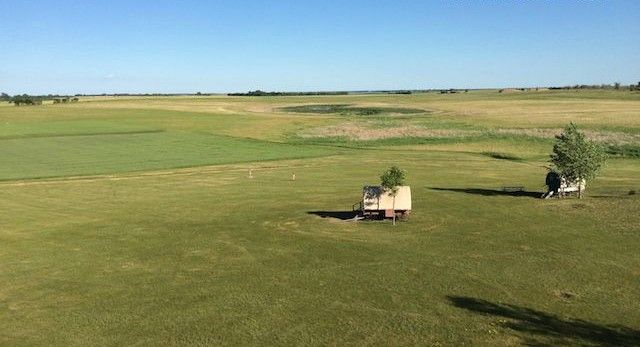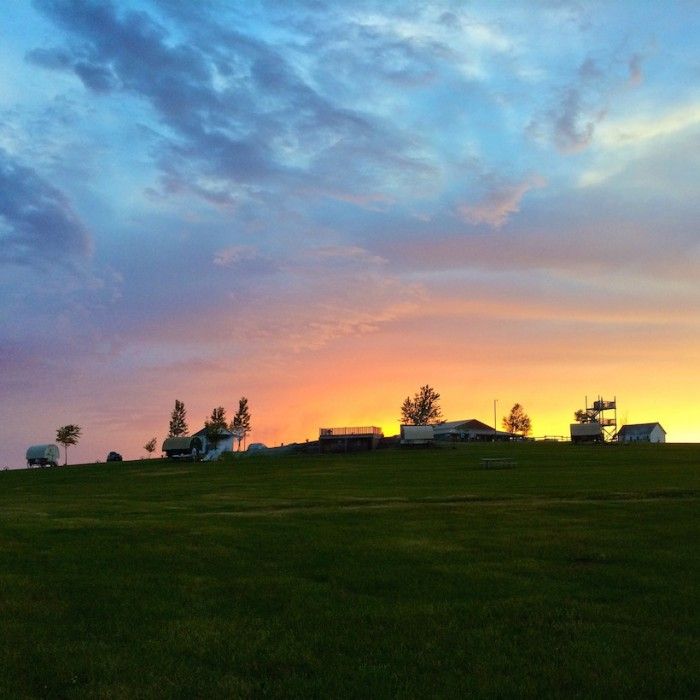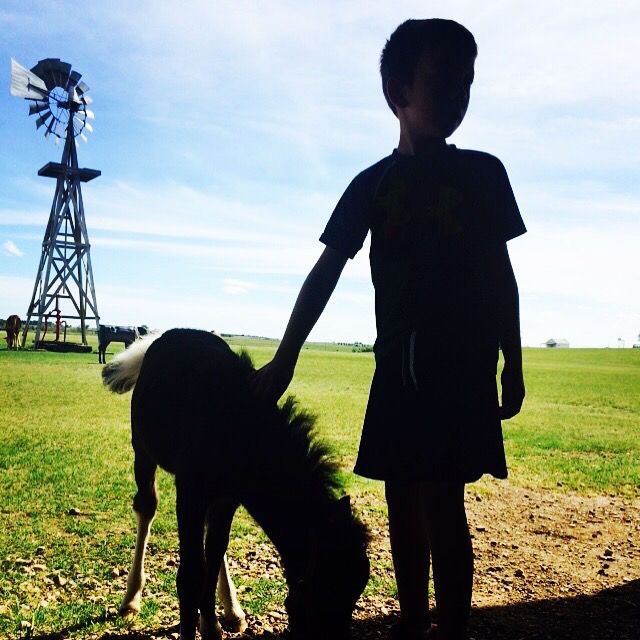Should we make a run for the storm shelter?!” The 80mph gusts of wind shook our covered wagons like ragdolls.
How I wished our family of five had all fit in one wagon! As it was, I frantically texted my husband while the storm raged outside.
With every crash of thunder my daughters squished closer, and I did my best Maria von Trapp impression while checking the horizon for tornadoes.
“Raindrops on roses and whiskers on kittens…”
To run or not to run?
“Bright copper kettles and warm woolen mittens…”
CRASH! Squash. Text husband. Softly whimper-sing.
“These are a few of my favorite things…”

My family spent four days camping in two covered wagons (we didn’t fit in one) on the Ingalls Family Homestead in DeSmet, South Dakota, where much of the Little House on the Prairie book series was set.
(Listen to the Simple Show episode where I chat with Tsh about this trip.)
On our second night there, a huge storm swept through town and prompted my whimper-singing, texting, and tornado watching.
It was pretty scary. We ended up running to the storm shelter (and met some really nice folks there) until things calmed down.
It was definitely an experience none of us will forget.
In the midst of it, though, I remember having this crazy thought: I wish we didn’t have a storm shelter.
Insane, I know. But somehow having the OPTION of going stressed me out almost as much as the storm.
Should we go to the storm shelter now? How about now? …Now? With all the lightning is it more dangerous in there (the shelter was the shower area) with the wet floors? Was that the sound of a tornado? If it was, then we should head for the shelter. If it wasn’t, I’m overreacting and stressing my kids out. Is it more dangerous to make the kids run through the storm to the shelter than to ride it out here?
I didn’t want to overreact (“I come from a long line of overreactors” – name that movie), but at the same time, I wanted to be wise and safe.
If we hadn’t had the option, I could have just focused on my praying, whimper-singing, and frantic texting.
I’m incredibly thankful we had a storm shelter to run to, but the whole experience reminded me how much stress is added simply by adding an option.

Options. We are inundated by them.
Did you know that the average adult in today’s society makes about 35,000 decisions every single day?
35,000. I’m exhausted just thinking about that.
Did you know that, according to Google’s Eric Schmidt, humans create as much information every two days as mankind created from the dawn of civilization until 2003?
With an endless number of websites to read, an entire aisle of toothpaste varieties, 10 different kinds of milk, eggs that can be free-range, cage-free or yolk free, and 300-400 television channels to choose from, we can be stressed and overwhelmed before we even hit Starbucks for our morning coffee (with over 80,000 different drink combination choices).
It’s wonderful to have choices and the power to choose, but sometimes we have too much of a good thing.
It almost makes me want to hightail it back to the prairie.

Our family had SO much fun camping those four days. We weren’t stressed about which outfit to wear (we didn’t bring much), what to eat (my campfire cooking skills are…limited) or what to do (there was no wifi or tv).
We didn’t have a lot of options, so it was easy to focus on the most important things: each other.
Back here in the real world, the important things get drowned out in all the noise. So what can we do to reduce the stress of all our choices?
1. Develop habits.
Habits bypass the decision-making process. If you’re a regular Tom’s toothpaste person, shopping for toothpaste probably won’t stress you out. But if you don’t have a habit—a routine—in place, you can face analysis paralysis.
2. Use checklists.
I love using lists—lists for myself, for my kids’ chores, for work, and anything else I do regularly. I have menu plan lists that I create once, then reuse over and over. My morning routine allows me to start my day peacefully. Caroline Ingalls even had a daily chore list so she didn’t have to decide what to work on each day.
3. Do your homework.
Before our long drive to South Dakota, I spent a little time researching my best healthy food options at fast food restaurants. This saved me SO much time and stress in the heat of ordering for five hungry people. I had a good idea of what to get, no matter where we went.
4. Choose simplicity over perfection.
When we try to do things the best, cheapest, fastest way possible, we analyze ourselves to death. Recognize the value of a peaceful decision over a perfect one.
Options don’t have to be the death of us in the modern world. We just have to use them to our advantage.



